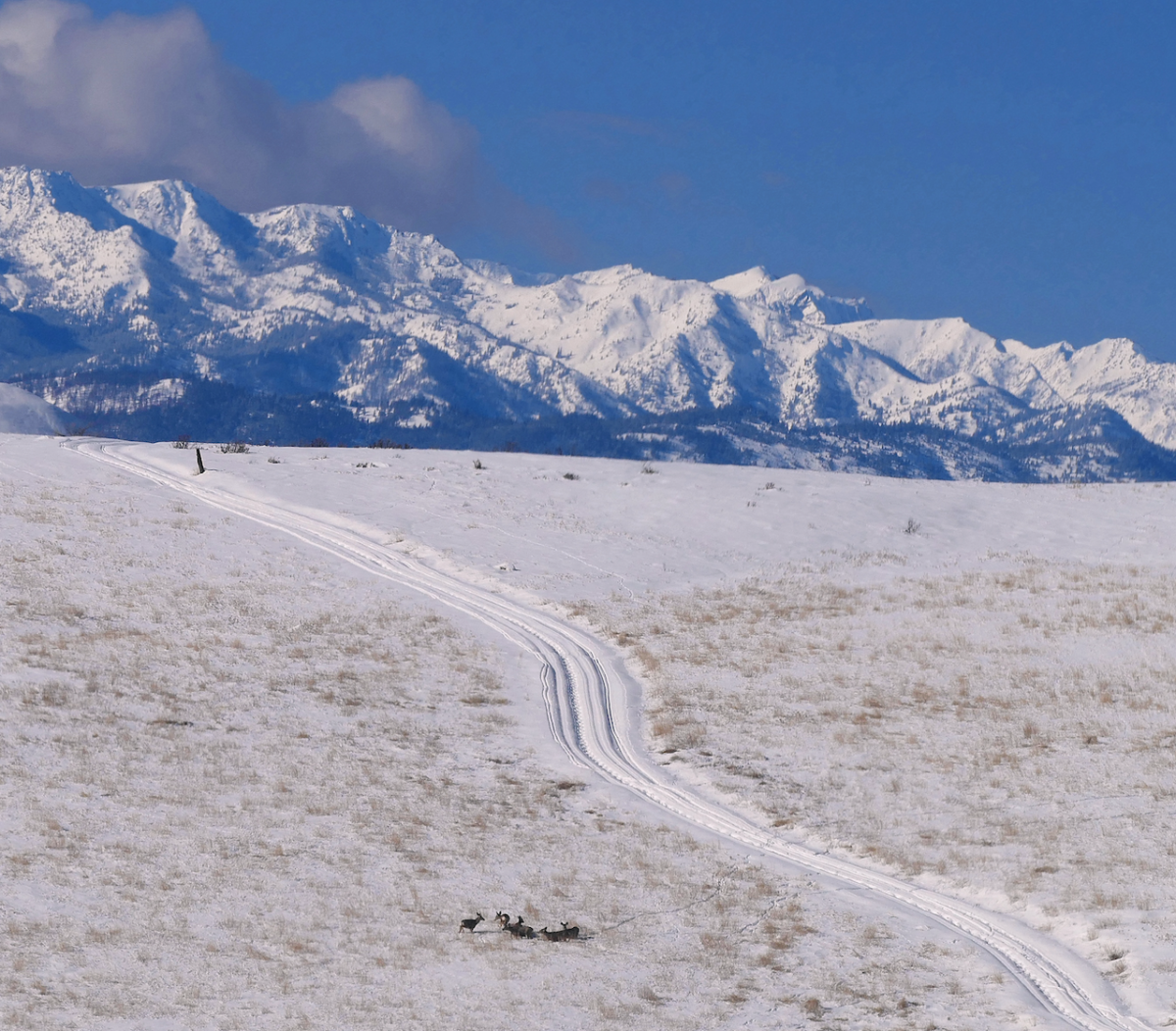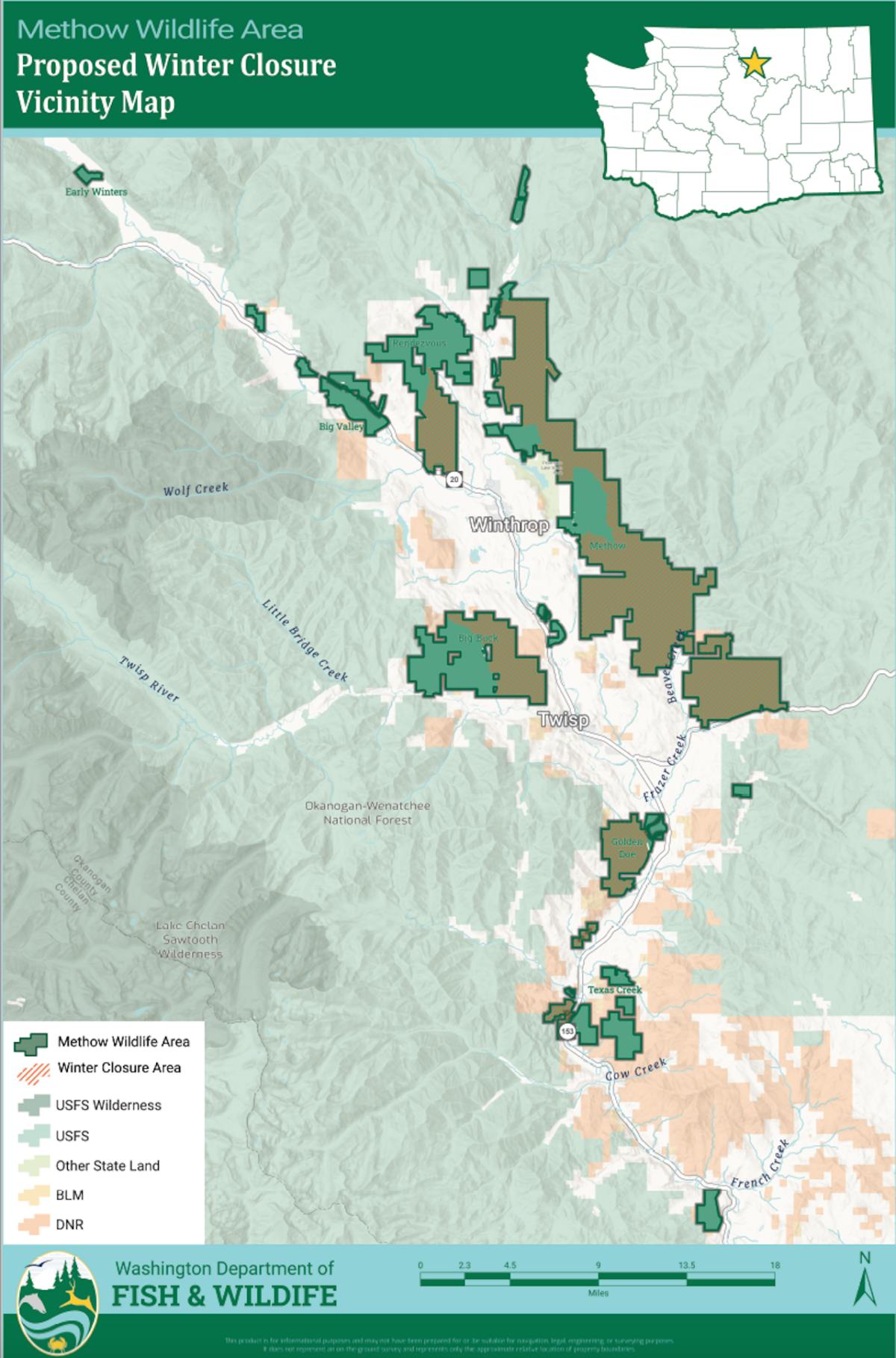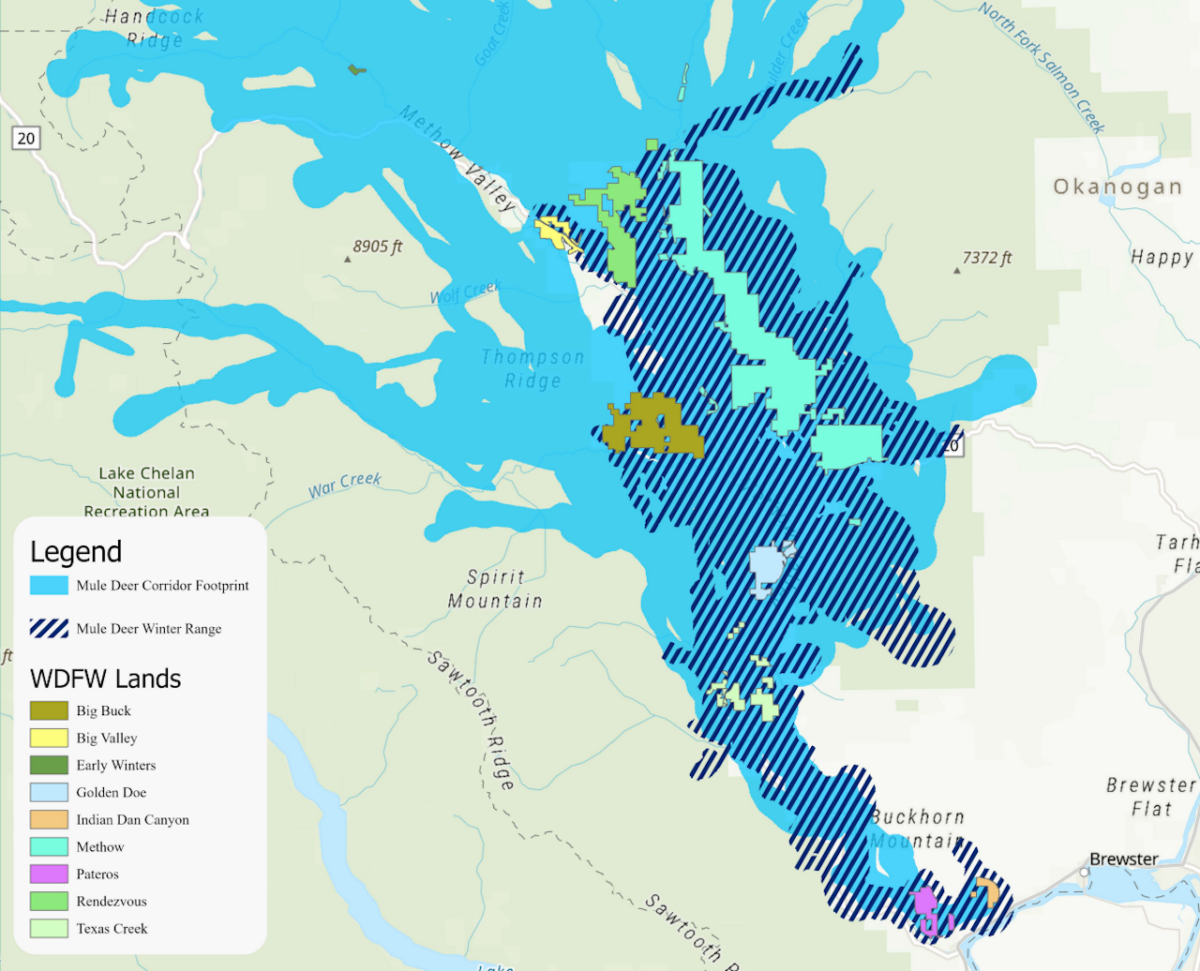
Winter Closure Coming To Methow Wildlife Area To Protect Deer Herd
A large portion of the Methow Valley Wildlife Area will close to recreational access over the coming three and a half months to protect Washington’s largest migratory mule deer herd on its winter range, as well as to potentially monitor the impacts that the “temporary” closure has on the ungulates.

WDFW says that lands within the Texas Creek, Golden Doe, Big Buck, Methow and Rendezvous Units of the 34,600-acre wildlife area in western Okanogan County will be affected and signage and maps will be posted with more details on the December 15-March 31 closure. The range – especially Golden Doe, Big Buck and Methow – see high use by deer from now into early spring.
“Human disturbance in winter range can result in deer unnecessarily expending vital energy reserves, which can directly affect survival and reproduction,” said Brandon Troyer, wildlife area manager, in a press release out today. “This closure will reduce human disturbance to mule deer during the most critical winter months when available habitat and forage are more limited. We worked closely with the public throughout this pilot process to balance community access with wildlife management. We are committed to public engagement as we learn from this effort and plan for the long-term management approach.”
When WDFW opened public comment in September on the proposed seasonal closure, it sparked discussion on Hunting-Washington, with some hunters very much in favor of it and a few skeptical of the agency’s intentions.
More recently, the Okanogan County Commission reportedly backed the closure, according to a Methow Valley News article earlier this month, with one member saying he’d been calling for just that for years, given the original intent of the wildlife area purchases for deer.

The Methow Wildlife Area Advisory Committee was also briefed on the proposal – which initially extended the closure to April 15, the start of spring turkey season – in May and members of the group were informed that studies in other western states have shown that winter recreation can disturb deer and that the species is declining across its range due “habitat loss, (land) conversion, climate change, disease, and a non-linear increase in recreation on the landscape.”
WDFW says the robust Methow Trails cross-country ski system, which overlaps some state wildlife area lands on the valley floor and nearby upland areas, won’t be affected by the seasonal closure, which amounts to about 2.2 percent of all public land in the Methow River watershed, according to a fact sheet that also lists Okanogan-Wenatchee National Forest, Okanogan County and WDFW roads that won’t be impacted by the closure.
The agency’s lands here were acquired beginning in the early 1940s with the launch of the State Game Commission’s Methow Land Acquisition Project that saw 30 homesteads on 9,000 acres bought to “alleviate deer damage” to crops. Other purchases followed in subsequent decades and together the grounds provide critical winter range for mule deer, conserve habitat and native species in a growing area, as well as host hunting and increasing recreational activities.
Some national forest lands adjacent to the wildlife area also close in winter to motorized access to minimize deer disturbance.
“We have seasonality around hunting. We have seasonality around fishing. There’s no reason we shouldn’t manage recreation in a similar manner,” WDFW’s Troyer told the Twisp-based newspaper.
MVN also reported that agency District Wildlife Biologist Scott Fitkin is working up a proposal to close the antlerless deer hunting opportunities currently available to general season bowhunters or by special permit. Does are the reproductive engine of all herds, and so easing harvest pressure on them – as well as reducing winter stress – could help improve fawn ratios and recruitment over the long term, as long as weather and winter and summer range conditions cooperate as well.
The Methow Valley is also home to a growing wolf population in the form of the Chewuch, Lookout, Loup Loup, Navarre and Sullivan Creek Packs, and they and cougars “predominately” prey on mule deer, making for a “higher possibility” there is competition between the predator species.

